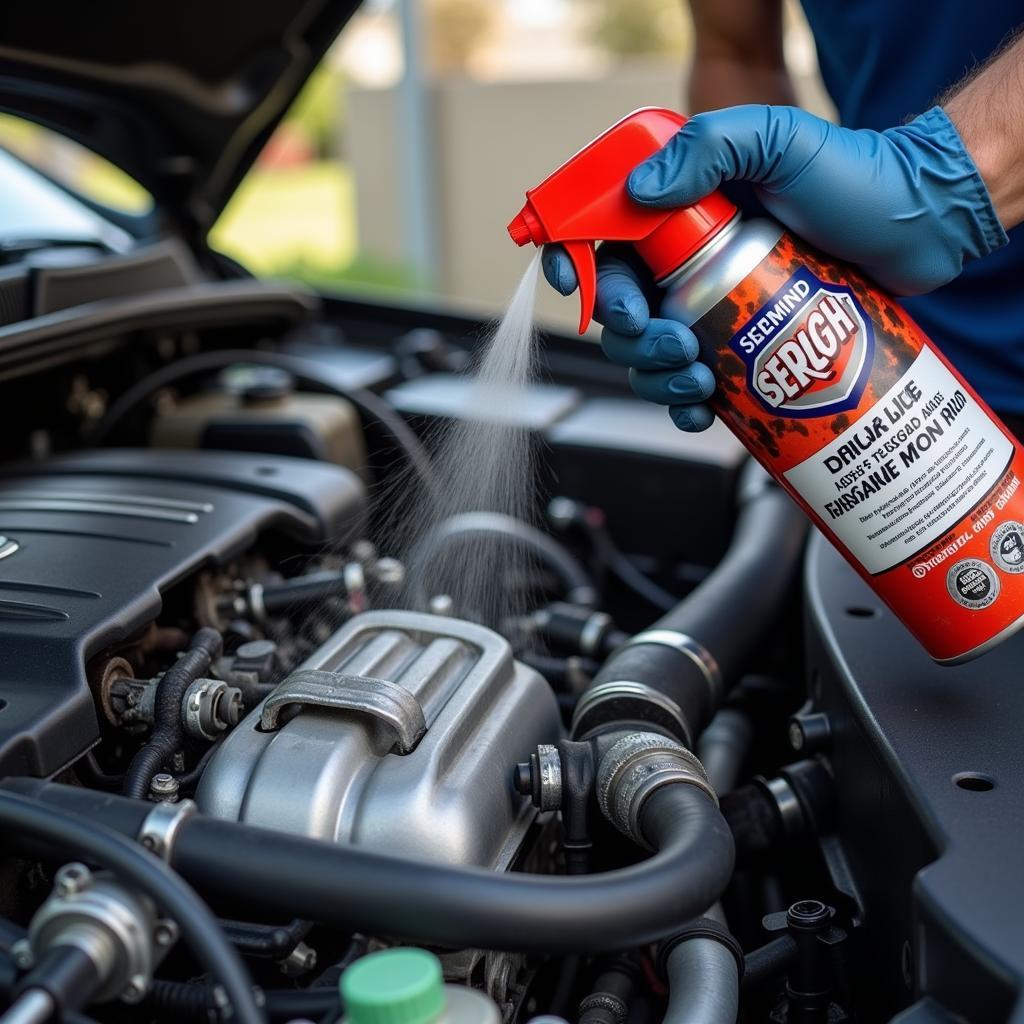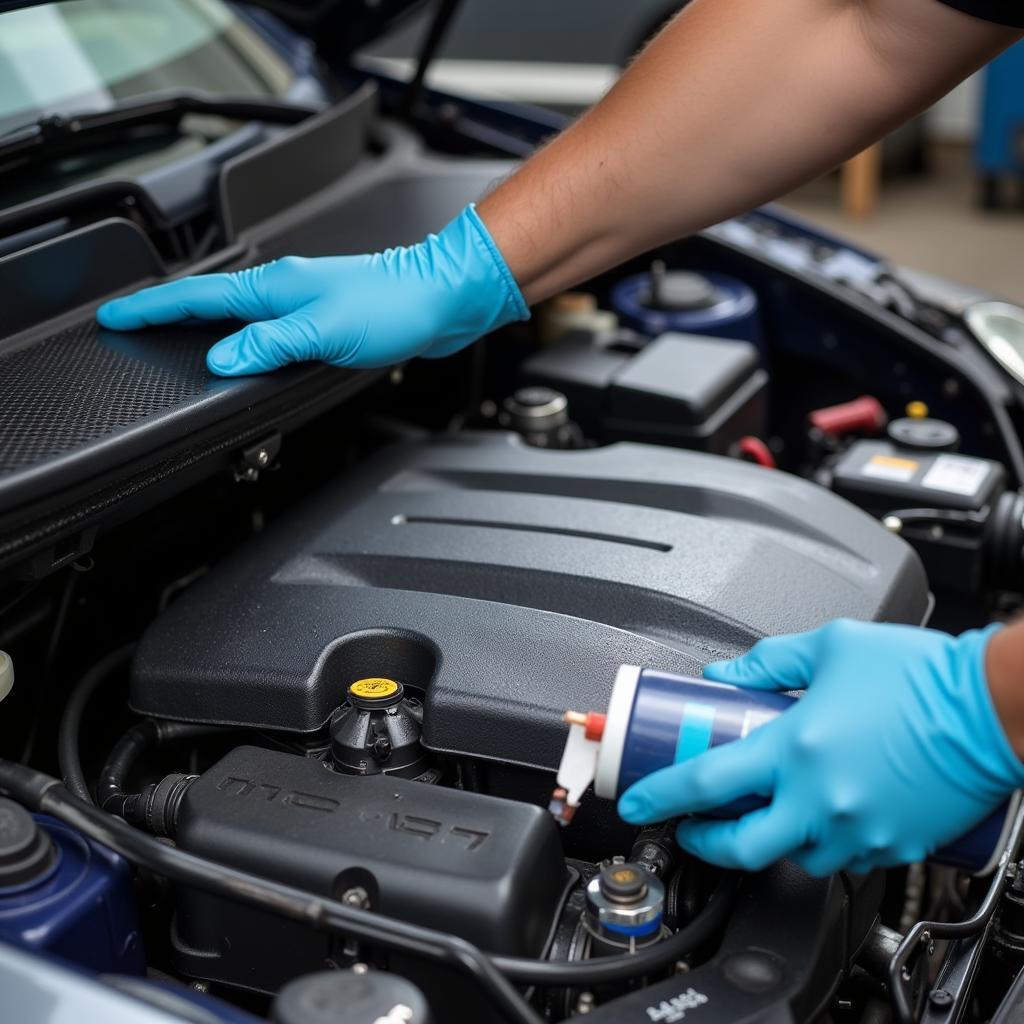A clean car engine isn’t just about aesthetics; it can improve performance and make it easier to spot potential problems. While taking your car to a professional detailer is an option, detailing your car engine yourself can be a rewarding experience, saving you money and giving you a sense of accomplishment. This guide will walk you through the process step-by-step, equipping you with the knowledge to achieve professional-level results right in your garage.
Preparing Your Engine Bay for Detailing
Before you begin detailing, it’s crucial to prepare your engine bay properly. This ensures your safety and protects sensitive components from potential damage.
- Safety First: Always wear safety glasses and gloves to protect your eyes and skin from chemicals and debris.
- Cool Down: Ensure your engine is cold to the touch before you start. Working on a hot engine can lead to burns and damage to components.
- Disconnect the Battery: Locate your car battery and disconnect the negative terminal first, followed by the positive terminal. This prevents any electrical mishaps during the cleaning process.
- Cover Sensitive Components: Use plastic bags or aluminum foil to cover sensitive electrical components like the alternator, fuse box, and exposed wiring. Secure these coverings with painter’s tape.
Degreasing and Cleaning Your Engine
Now that your engine bay is prepped, it’s time to tackle the grime and grease buildup.
- Initial Rinse: Use a garden hose with a spray nozzle to rinse off loose dirt and debris. Avoid using a high-pressure washer, as the force can damage delicate components.
- Apply Degreaser: Choose an engine degreaser specifically designed for automotive use. Spray the degreaser liberally over the entire engine bay, ensuring you reach all the nooks and crannies. Let the degreaser sit for the recommended time specified on the product label.
- Scrub-a-Dub-Dub: Use a selection of brushes, including a long-handled brush, a detail brush, and an old toothbrush, to agitate the degreaser and loosen stubborn grime. Pay attention to areas with heavy buildup, such as the valve covers, intake manifold, and around the battery tray.
 Applying Engine Degreaser
Applying Engine Degreaser
- Rinse Thoroughly: Once you’ve thoroughly scrubbed the engine bay, use the garden hose to rinse away the degreaser and grime. Ensure all traces of the degreaser are removed, as it can damage components if left to dry.
Protecting and Enhancing Your Engine Bay
With a clean engine, it’s time to add a layer of protection and enhance its appearance.
- Dry the Engine Bay: Use a microfiber towel to dry the engine bay as much as possible. You can also let the engine air dry for a while, but ensure all standing water is removed.
- Apply Engine Protectant: Choose an engine protectant that suits your needs. Some protectants offer a matte finish, while others provide a glossy look. Spray the protectant evenly over the entire engine bay, following the product’s instructions.
- Wipe Away Excess: Use a clean microfiber towel to wipe away any excess protectant and ensure an even finish.
 Applying Engine Protectant
Applying Engine Protectant
Reconnecting the Battery and Final Checks
- Reconnect the Battery: Reconnect the positive terminal of your car battery first, followed by the negative terminal. Ensure the connections are secure.
- Final Inspection: Do a final walk-around of your engine bay, checking for any missed spots or areas that need attention.
- Start Your Engine: Start your engine and let it run for a few minutes to help everything dry completely.
FAQs About Detailing Your Car Engine
Q: Can I use a pressure washer to clean my engine?
A: It’s best to avoid using a pressure washer as the high pressure can force water into sensitive electrical components, potentially causing damage.
Q: What type of degreaser is best for my car engine?
A: Use a dedicated engine degreaser formulated for automotive use. Avoid using harsh household cleaners, as they can damage engine components.
Q: How often should I detail my car engine?
A: It’s recommended to detail your car engine at least once a year. However, if your car is frequently exposed to dirt, grime, or harsh weather conditions, you may need to detail it more often.
Need Help Detailing Your Car?
Detailing your car engine can be a fulfilling task, but it requires the right knowledge and tools. If you need expert assistance, don’t hesitate to reach out! Contact us via WhatsApp at +1(641)206-8880 or email us at [email protected]. Our dedicated customer service team is available 24/7 to assist you. You can also check out our other informative articles like How Much Does It Cost to Detail Your Car? and How to Detail Your Leased Car for more car detailing tips and advice.
Remember, a clean engine is a happy engine!

Leave a Reply